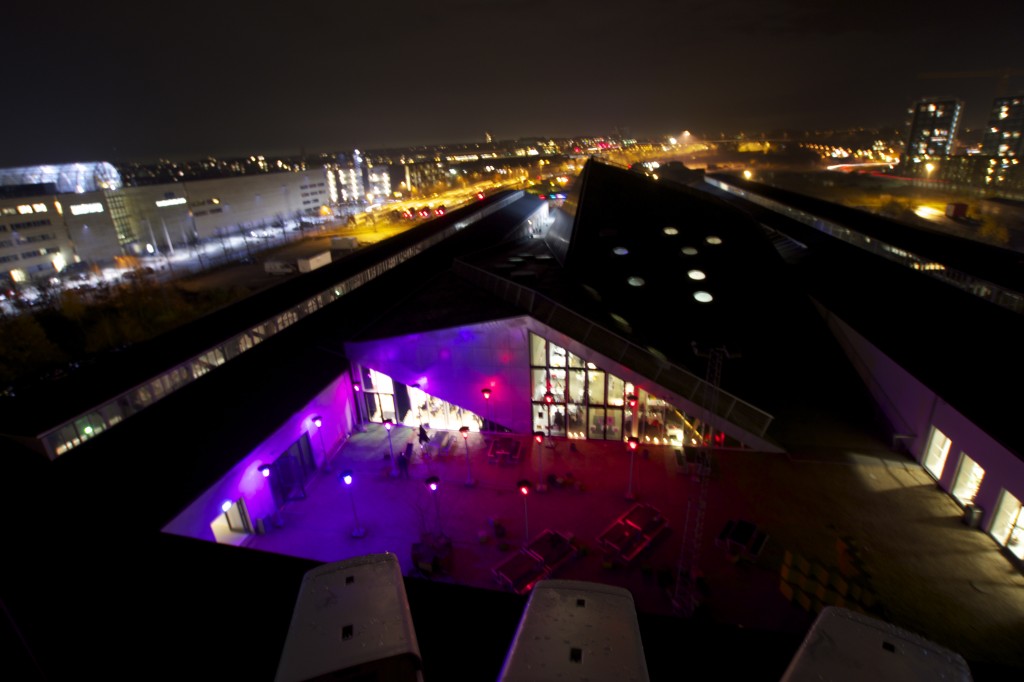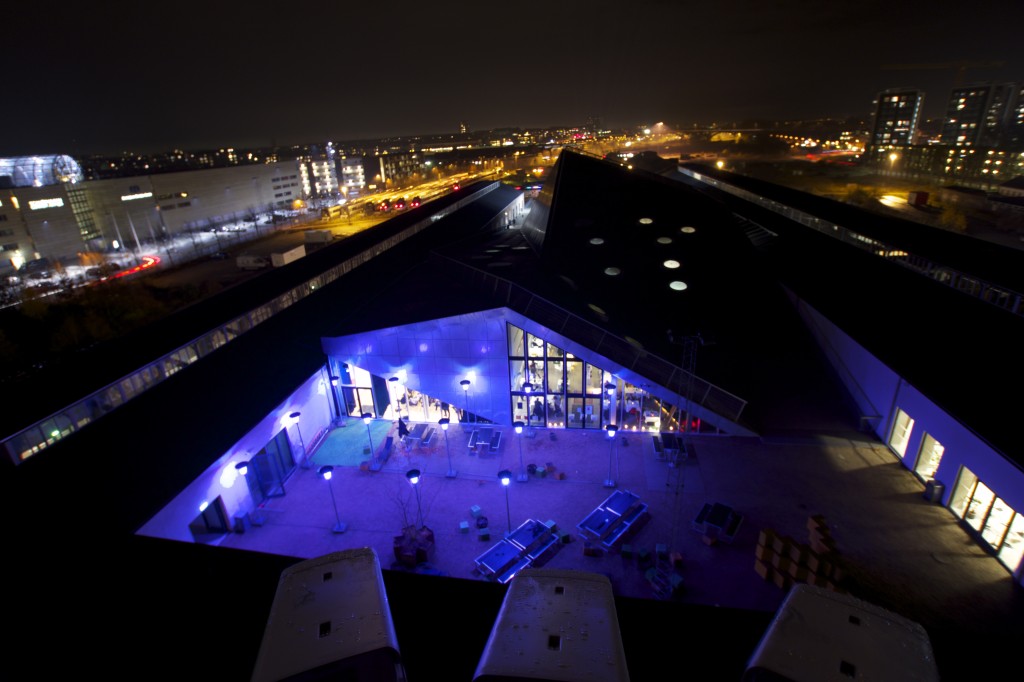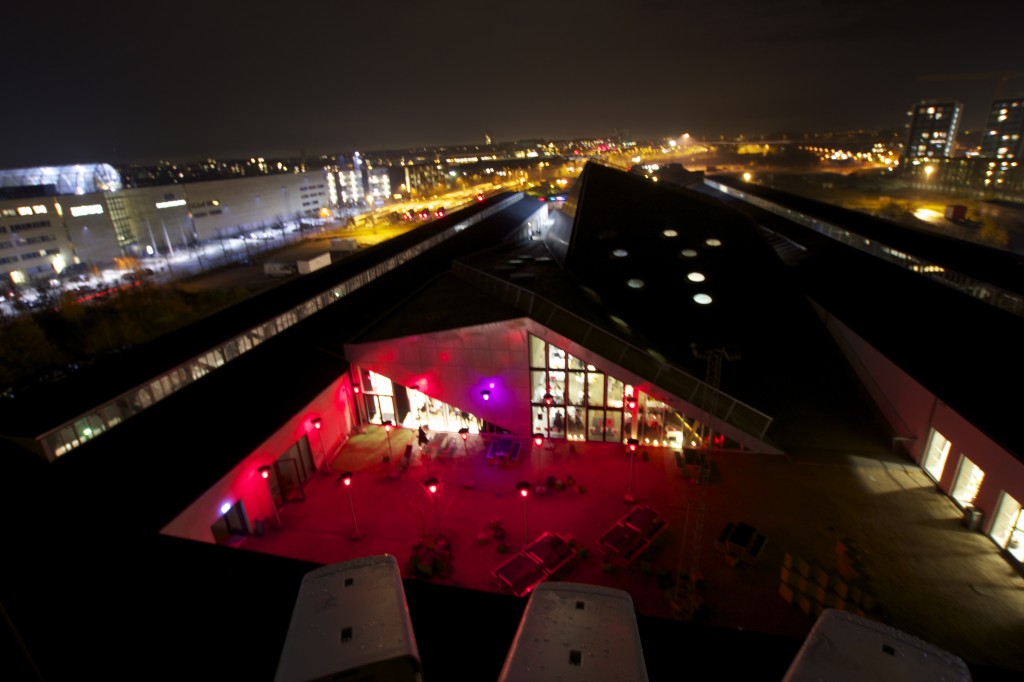Responsive Urban Lighting at Media Architecture Biennale (MAB) (Workshop)

Original Workshop Description
“This workshop will celebrate an experimental practice and, through 1:1 scale experiments in the wild, develop new knowledge in crafting interactive lighting scenarios, that are both beautiful and time efficient to realize.
The workshop addresses questions such as: How can we systematically design lighting behaviors in public spaces? To what extent does responsive urban lighting affect our experience of architecture as well as the social protocol? What are the implications on safety, efficiency, social interactions, design, commercial, and aesthetic response patterns in interactive lighting design?
In the morning session of the workshop, participants will be introduced to a thermo camera tracking system, a design tool for mobile phones and design methodologies in public responsive lighting. During the afternoon session participants will be using a system that has been developed to distinguish various occupancy patterns in public spaces. For example, events such as encounters, long term occupancy and “passing through” which result in digital signals that can be used to affect lighting patterns.
During the workshop participants will develop multi-user interaction scenarios for urban lighting and, through simulations on architectural models, test different designs. The final outcome will be displayed in the city of Aarhus on a 1:1 scale model and thereby turn the public space into an ‘urban laboratory’ while allowing the participants to observe and evaluate social, aesthetic and energy related qualities of different responsive lighting designs.”
– Esben Skouboe Poulsen, Rasmus Krarup.
Personal Thoughts
The workshop (hosted as part of the Media Architecture Biennale in Aahus, Denmark) was very fun. It was extremely interesting to think about the lighting-systems of large areas such as parks as massive living organisms that can aesthetically convey moods, safety, and information (like wind and tide patterns) as well as dynamically detecting, responding (e.g. wayfinding animations), and potentially playing with passerbys (e.g. games of tag).
Many thanks to Esben Poulsen and Rasmus Krarup for hosting us, and fellow participants; Daniela Mortarotti, Henrika Pihlajaniemi, Mark C. Mitchell, Kendrick Khoo, Emila Yang, and Walther Jensen.




